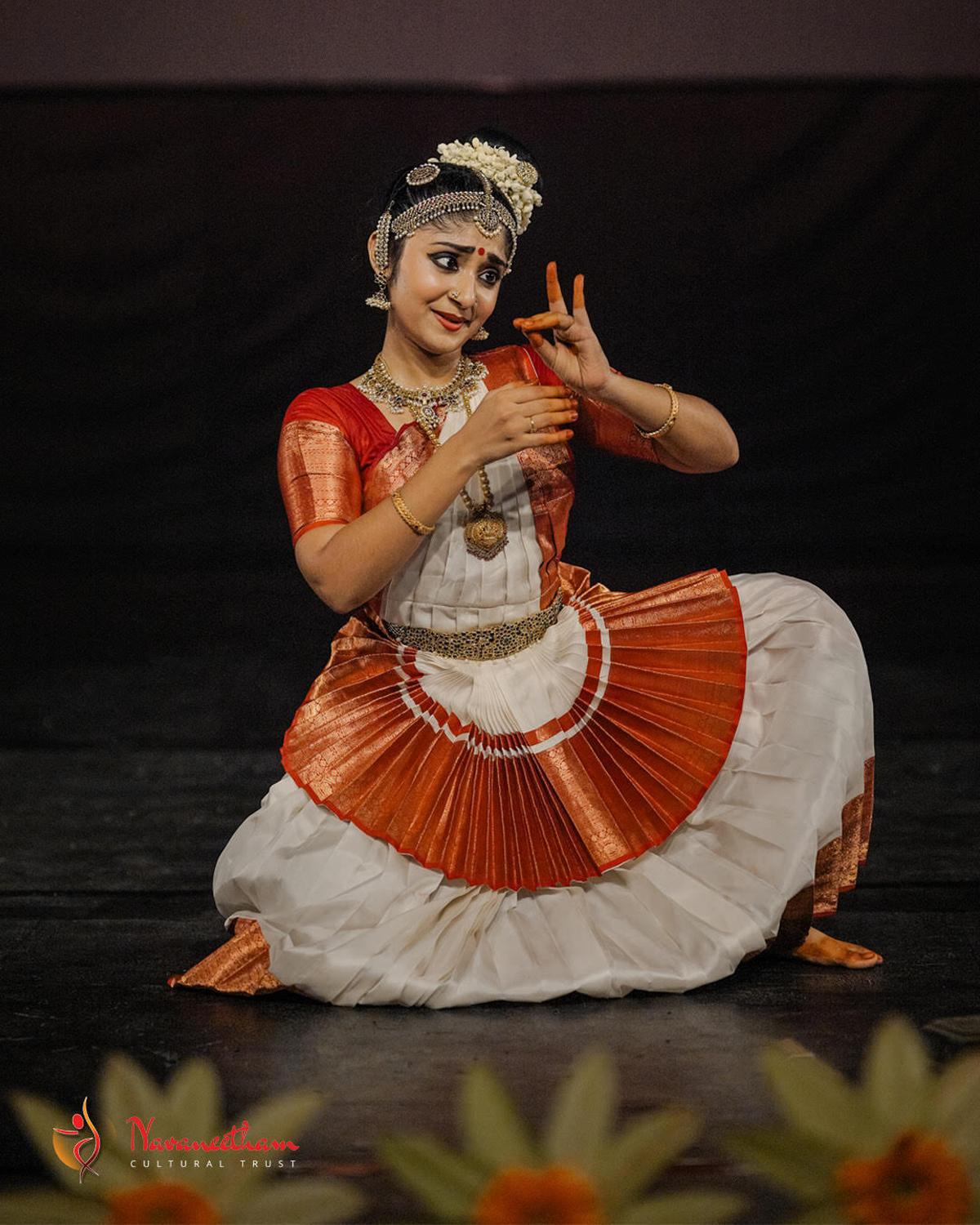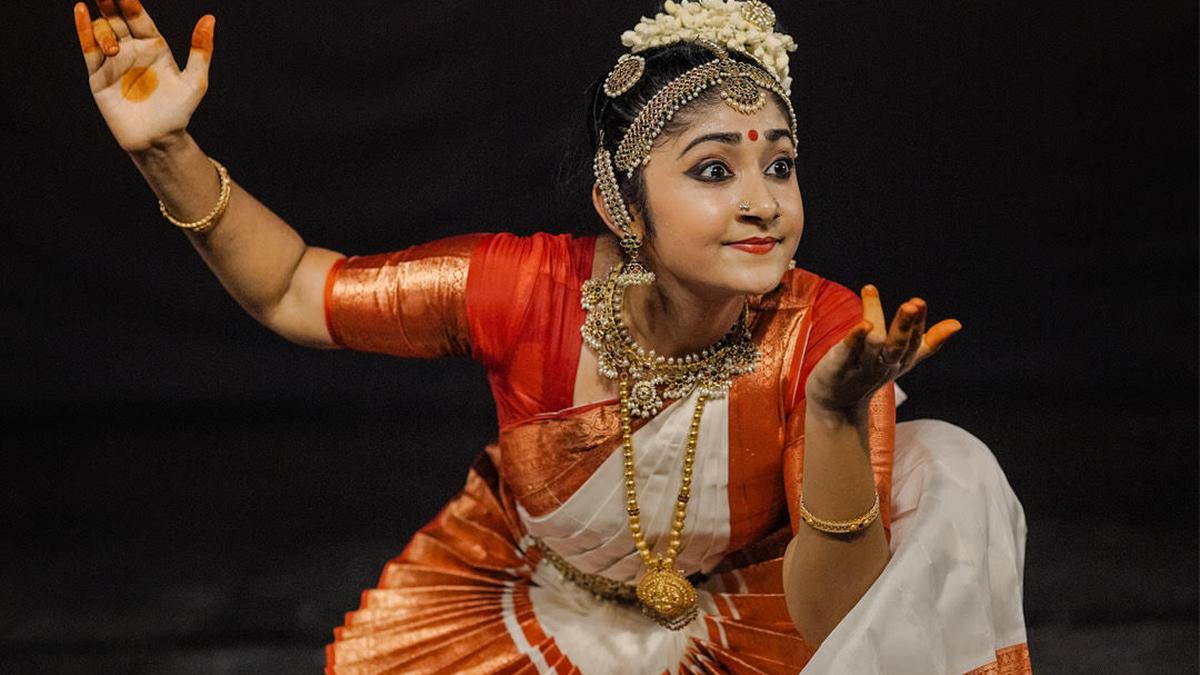Kalyani Menon Harikrishnan | Photo Credit: Special Arrangement
During the initial stages of its revival at Kerala Kalamandalam in the 1930s, Mohiniyattam was primarily based on the padams of Swati Tirunal, the Maharaja who played a key role in the revival of the dance form. While most padams had the Vipralambha Sringaram motif, Mohiniyattam began to adopt diverse themes only in the last five decades. ‘Odiyan’, staged recently by young dancer Kalyani Menon Harikrishnan in Thrissur, was one such performance. It was presented under the aegis of Thauryatrikam, a project of the Navaneetham Cultural Trust.
The Odias are a group of mysterious characters believed to have existed in Kerala, particularly in the Malabar region. They belonged to certain tribal communities and were adept at transforming themselves into the shapes of animals and birds.
The enigmatic character has gained a lot of attention recently as a feature film with the same name was released in 2018.

Kalyani Menon Harikrishnan | Photo Credit: Special Arrangement
The script for Kalyani’s rendition was written by Sreeja Kavanad. The song narrates the story of Kurathi, a tribal woman from a hilly region, coming to a village. She is fascinated by the natural beauty of the village. She also meets an Odiyan and is impressed by his supernatural powers, including his ability to transform into various animals. She discovers that this transformation occurs when Odiyan applies the juice of some wild plants behind his ears. When she praises his unique power, he disappears. Interestingly, the evil side of Odiyan has been left out in the script.
Kalyani’s performance, which was based on folk songs, was notable for its theatricality. In particular, her portrayal of various animals was impressive.
Kalyani began the recital with a veneration of Bala Ganapathy in Nattai and Aadi. This was followed by a varnam ‘Natna Nipuna’ in two parts – Kamadahana and Neelakantha – in praise of Shiva. The composition was set in Rithigolla raga and Aadi tala. Her nritta was notable for well-defined postures as well as aesthetically rendered adavu. Her netrabhinaya was also commendable. She also performed Kavalam Narayana Panikar’s famous ‘rain song’, ‘Karu Kare Karamukil’. The depiction of a peacock was the highlight of the piece. Though familiar on the Mohiniyattam stage, Nirmala Panikar’s choreography brought out many aspects of the monsoon by incorporating flavours of folk forms like Mudiyettu, Thudichukali and Vanchipattu. Interestingly, the dancer descended from the stage as if rowing a boat. The selection of Sopana raga Samanthamalahari added to the charm.
Overall, the choreography showcased Nirmala’s ability to weave together folk and classical music. Singer Neelamperur Sureshkumar, veena player Murali Krishnan and maddalam player Kalanilayam Prakashan were the accompanists. They ensured that the music matched the mood of each composition well.
